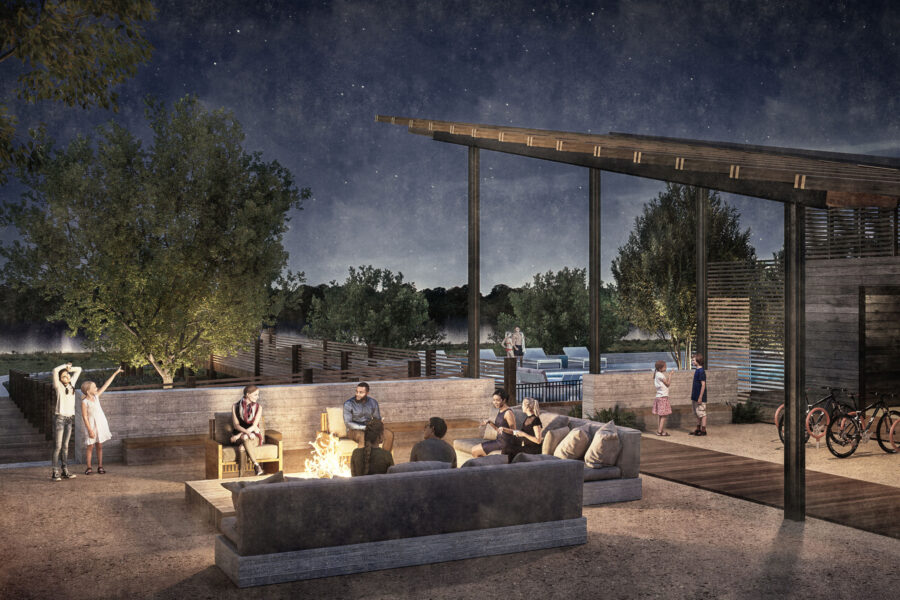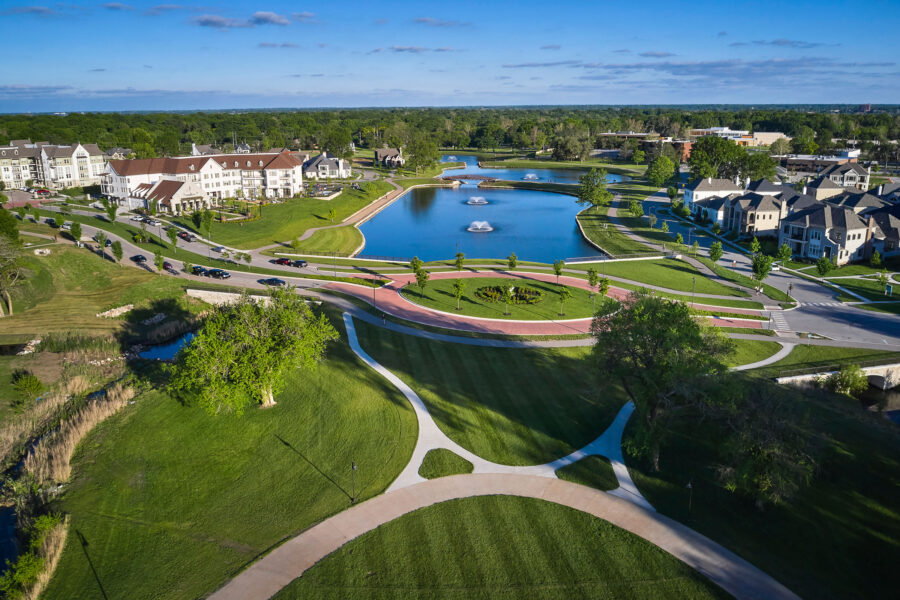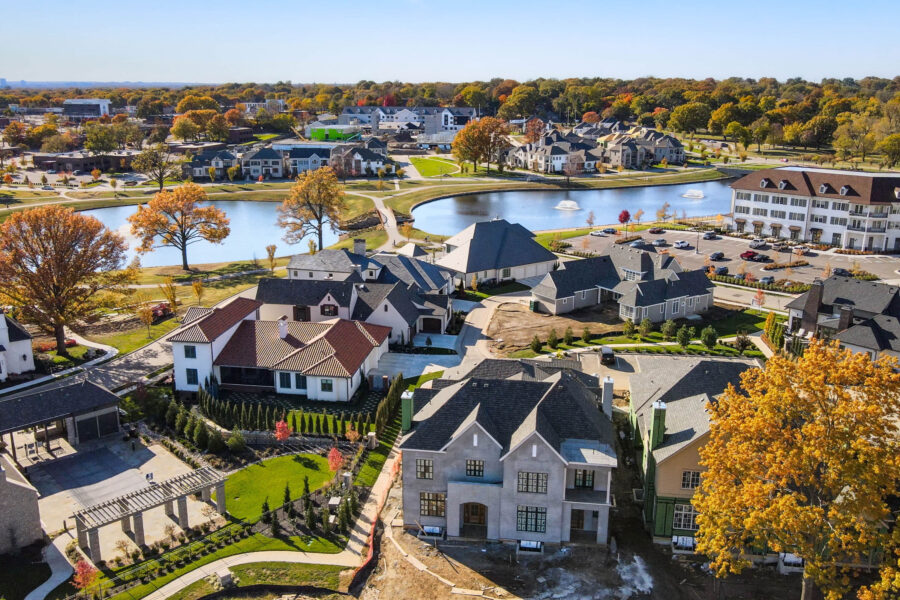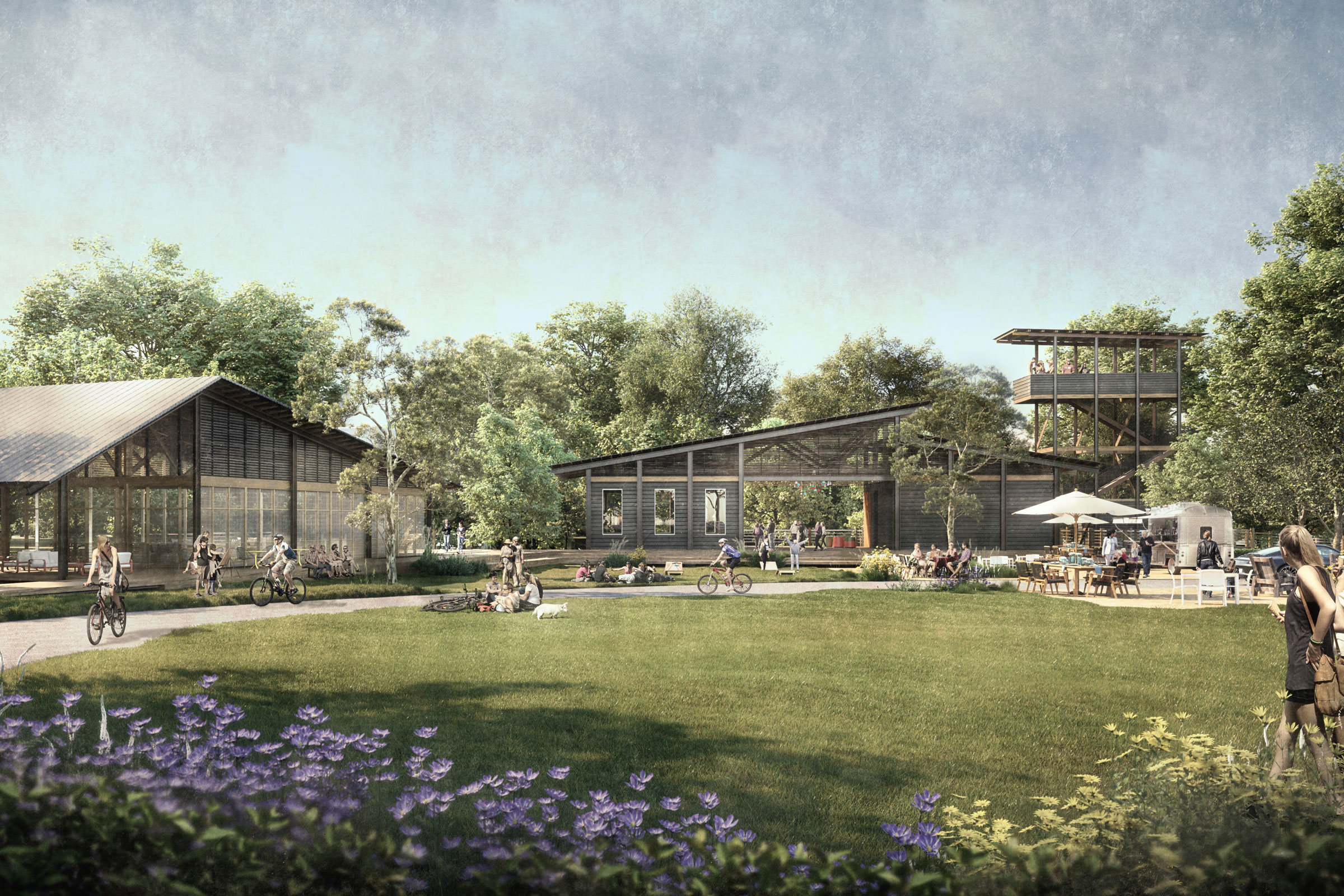Story at a glance:
- A top architect at LRK looks at what it really means to value and integrate nature in architecture.
- Modern architecture and design isn’t just about green buildings; it’s about green communities.
- Consumers are demanding the ability to engage and experience nature in the communities where they live.
Over recent years the architecture community, including our team at LRK, has witnessed a progressive shift in the emphasis on environment and nature as an integral part of design and development. The industry has moved from a focus on green buildings to an emphasis on green communities. Architects are embracing nature when master planning communities and approaching designs and plans with the overarching guide of prioritizing nature first. In addition to honoring our responsibility to the environment, architects and planners are seeing nature as a highly valued part of their developments.
The pandemic shifted the value nature brings in from the consumer perspective; there’s a desire to bring the outdoors into daily living. After the world was stuck inside their homes and unable to be out socializing, a desire to be outside was born. People found value in indoor-outdoor living and nature trails and places where they could be in touch with the outdoors during an isolating period.
The value people found in nature carried over to post-pandemic life and continues to grow. People want to experience nature, not just look at it. Additionally, the pandemic spurred the popularity of remote work and the convenience of delivery. In a world where people have the option to work from home or have food delivered to their front door, what draws people out? The drive to connect with nature draws people out, and we can’t compete with that. We’ve seen this value and emphasis on the experience of nature over just the view of nature across all types of planning and projects—retail, restaurants, office campuses, housing, mixed-use, and more.
When looking at the process of how we ensure we have a seamless integration of nature with development, it’s important to start with listening to the land. We start with walking the property and understanding the landscape and its unique aspects. By observing and listening we can learn from nature and see how it will be seamlessly incorporated. This approach is not new; it is a return to how towns, neighborhoods, and communities were traditionally planned around the advantages the land and natural environment provided. Now we’re seeing more of a return that approach in today’s industry.

Painted Tree in McKinney, Texas. Photo courtesy of LRK
A few specific projects come to mind when thinking of developments that exist in harmony with nature. Painted Tree in McKinney, Texas, is a master planned community where “your front door is your trailhead.” In lieu of a fitness center the community has an expansive system of hiking, biking, and walking trails that run throughout the community. The amenities are designed to nestle in nature and draw upon the architectural vernacular and inspired by state park architecture.
At Painted Tree the architecture is secondary to its surroundings with nature is acting as a backdrop for the built environment. Each building is intentionally positioned to preserve the existing natural environment. The buildings share a language with nature through the use of natural materials and simple details.

Meadowbrook Park in Prairie Village, Kansas. Photo courtesy of LRK
Another great example is Meadowbrook Park in Prairie Village, Kansas, where the community planned for a former 136-acre golf course, surrounded by established neighborhoods lacking sufficient park space, to be redeveloped as a planned neighborhood with significant open space. The community was re-envisioned as two beautiful neighborhoods with a mix of single-family homes, attached homes, luxury apartments, a senior living complex, and a boutique hotel with a café, restaurant, and food truck.

Meadowbrook Park in Prairie Village, Kansas is a former golf course community that was redeveloped to emphasize open green space. Photo courtesy of LRK
Two-thirds of the original Meadowbrook site was transformed into a public park that focuses on three centrally located ponds that were environmentally upgraded. The neighborhood form and building locations intentionally preserve mature trees and blend with the park through a formal frontage, green courtyard connections and neighborhood parkettes that act as a seamless continuation of the park experience. Repurposing private golf courses into public parks integrated with neighborhoods provides more people with opportunities to interact with nature and open space without the limitations of club membership and access fees associated with golf course use.
With master planned communities the return on investment is more valuable when there is an intentional incorporation of nature. The industry has seen heightened interest and sales in developments that have a heavy focus on nature. The accelerated lot sales in communities that integrate nature have enabled developers to see a quicker return on their investment.
The industry has seen heightened interest and sales in developments that have a heavy focus on nature.
Communities and developments that bring an opportunity to engage with nature to the people who inhabit those communities brings an intangible value as well. Being present with nature brings positive impacts to both mental and physical wellness. Discussions among buyers are becoming more and more centered around personal wellness, and in a time where remote work is bringing the office into the home, nature inspired wellness is more important than ever. The calming effect of being within nature has a significant impact on mental wellness, and the opportunity to be outside walking or riding a bike on nature trails contributes to physical wellness.
I believe we will continue to see master planned communities; multifamily developments and all types of projects continue to trend in the direction of incorporating nature. The indoor-outdoor living component is a trend we’re already seeing across all spaces—including retail, office space, and multi-use spaces with sliding doors, screened porches, and garage doors. The industry is moving toward thoughtful integration of nature and the built-form and moving away from creating a contrast between the two.
Moving forward I anticipate the industry will continue to push the envelope when it comes to developments not just coexisting with nature but allowing nature to be ingrained in development. Buildings will be intentionally and appropriately sitting within nature; they will be secondary to what the land already brings, and construction materials will be chosen based on what blends with the land. Consumers will continue to demand the ability to engage and experience nature in the communities where they live, and design will follow that demand.




